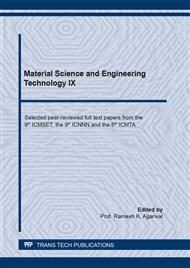p.97
p.103
p.111
p.121
p.127
p.135
p.141
p.147
p.155
Effects of Waste Soda-Lime Glass Sand and Glass Fiber on Physical and Mechanical Properties of None-Autoclaved Aerated Concrete
Abstract:
This paper investigates the combined effect of waste soda-lime glass sand and glass fiber on the physical and mechanical properties of none-autoclaved aerated concrete (NAAC). The use of both soda-lime glass sand and glass fiber can provide silica-rich materials in the aerated concrete and can enable the elimination of an autoclaved curing by enhancing the physical and mechanical properties in aerated concrete. In this study, a total of six mixture proportions were designed to evaluate these properties in NAAC. The mixture parameters included the partial substitutions of normal sand with soda-lime glass sand (0%, 15%, and 30%) and glass fiber (1%, 2%, and 3%). A series of tests were conducted to determine density, absorption, porosity, and both compressive and flexural strengths of the NAAC. Test results present that the increase of glass sand content leads to the increasing of both compressive and flexural strengths. Moreover, the combination of the use of glass sand with glass fiber also increases the strength up to 2 times (the mixture of 30% glass sand and 3% glass fiber). Furthermore, test results indicate the relatively good relationship between the density, porosity, and of NAAC with good accuracy.
Info:
Periodical:
Pages:
141-146
Citation:
Online since:
March 2021
Price:
Сopyright:
© 2021 Trans Tech Publications Ltd. All Rights Reserved
Share:
Citation:


